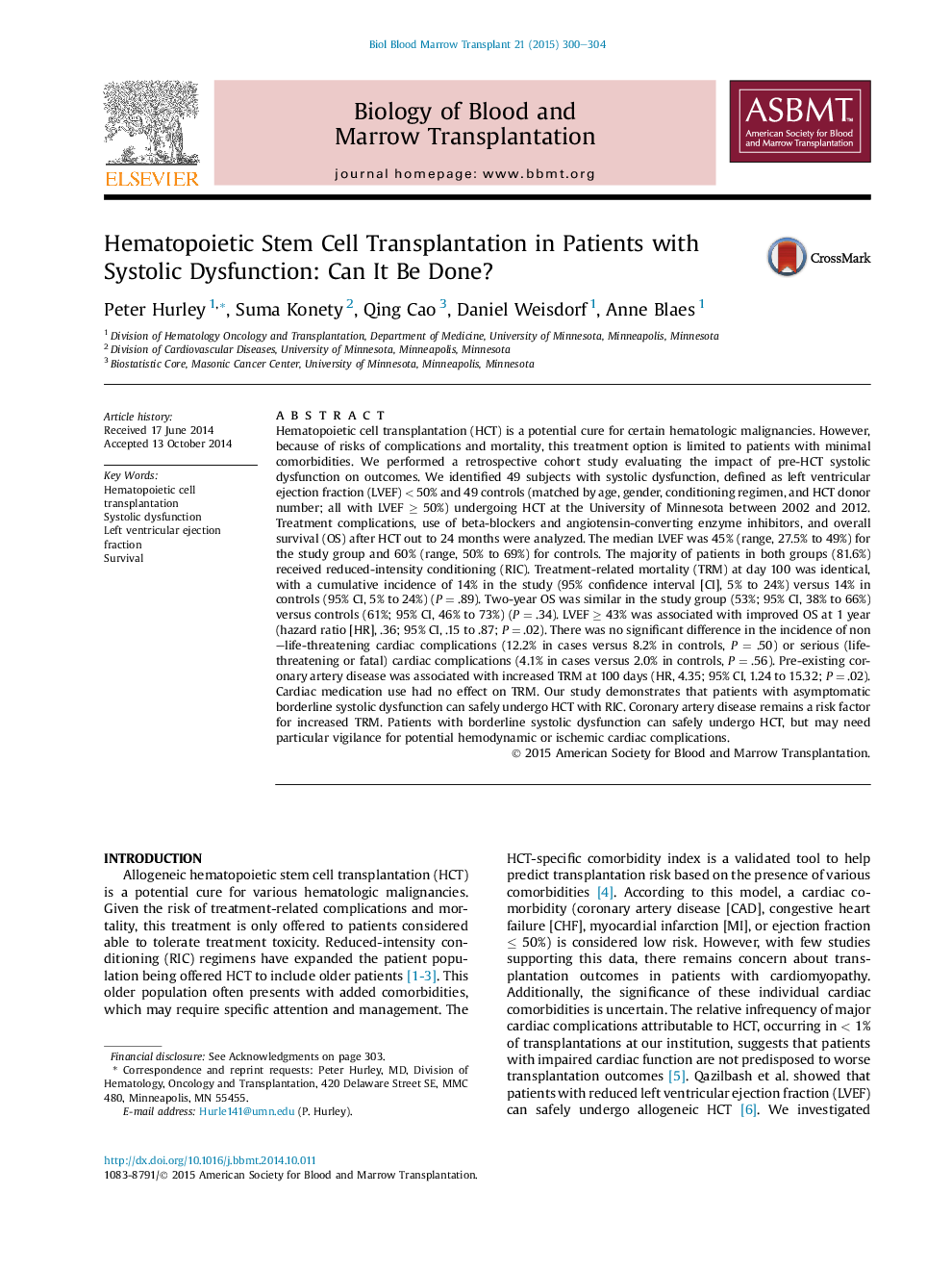| Article ID | Journal | Published Year | Pages | File Type |
|---|---|---|---|---|
| 2102979 | Biology of Blood and Marrow Transplantation | 2015 | 5 Pages |
•The transplantation population is aging and, therefore, more likely to have comorbidities.•Our retrospective cohort study showed that subjects with borderline systolic dysfunction had similar transplantation outcomes to those without systolic dysfunction.•Coronary artery disease was associated with worse outcomes.•Patients with more severely depressed left ventricular ejection fractions (≤43%) had worse transplantation outcomes.
Hematopoietic cell transplantation (HCT) is a potential cure for certain hematologic malignancies. However, because of risks of complications and mortality, this treatment option is limited to patients with minimal comorbidities. We performed a retrospective cohort study evaluating the impact of pre-HCT systolic dysfunction on outcomes. We identified 49 subjects with systolic dysfunction, defined as left ventricular ejection fraction (LVEF) < 50% and 49 controls (matched by age, gender, conditioning regimen, and HCT donor number; all with LVEF ≥ 50%) undergoing HCT at the University of Minnesota between 2002 and 2012. Treatment complications, use of beta-blockers and angiotensin-converting enzyme inhibitors, and overall survival (OS) after HCT out to 24 months were analyzed. The median LVEF was 45% (range, 27.5% to 49%) for the study group and 60% (range, 50% to 69%) for controls. The majority of patients in both groups (81.6%) received reduced-intensity conditioning (RIC). Treatment-related mortality (TRM) at day 100 was identical, with a cumulative incidence of 14% in the study (95% confidence interval [CI], 5% to 24%) versus 14% in controls (95% CI, 5% to 24%) (P = .89). Two-year OS was similar in the study group (53%; 95% CI, 38% to 66%) versus controls (61%; 95% CI, 46% to 73%) (P = .34). LVEF ≥ 43% was associated with improved OS at 1 year (hazard ratio [HR], .36; 95% CI, .15 to .87; P = .02). There was no significant difference in the incidence of non–life-threatening cardiac complications (12.2% in cases versus 8.2% in controls, P = .50) or serious (life-threatening or fatal) cardiac complications (4.1% in cases versus 2.0% in controls, P = .56). Pre-existing coronary artery disease was associated with increased TRM at 100 days (HR, 4.35; 95% CI, 1.24 to 15.32; P = .02). Cardiac medication use had no effect on TRM. Our study demonstrates that patients with asymptomatic borderline systolic dysfunction can safely undergo HCT with RIC. Coronary artery disease remains a risk factor for increased TRM. Patients with borderline systolic dysfunction can safely undergo HCT, but may need particular vigilance for potential hemodynamic or ischemic cardiac complications.
